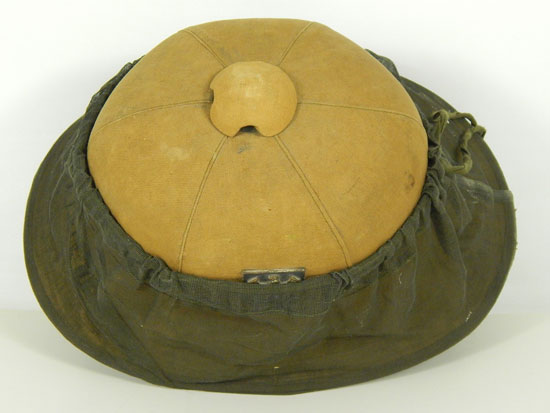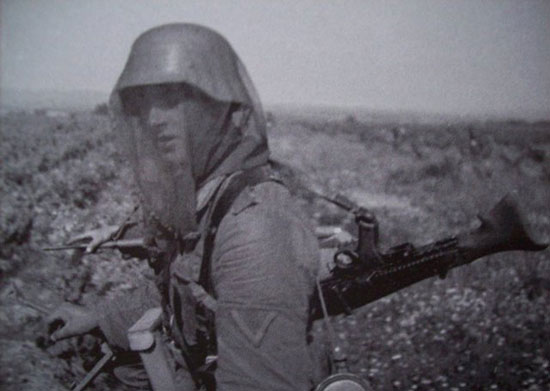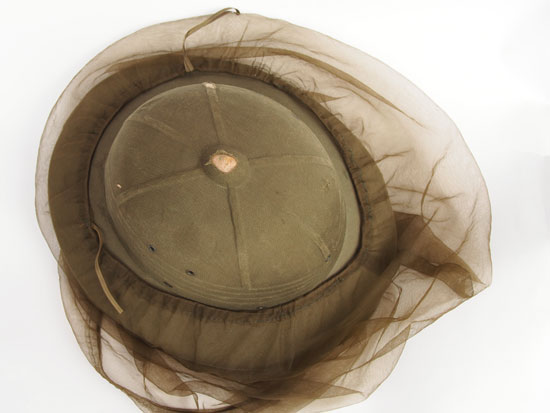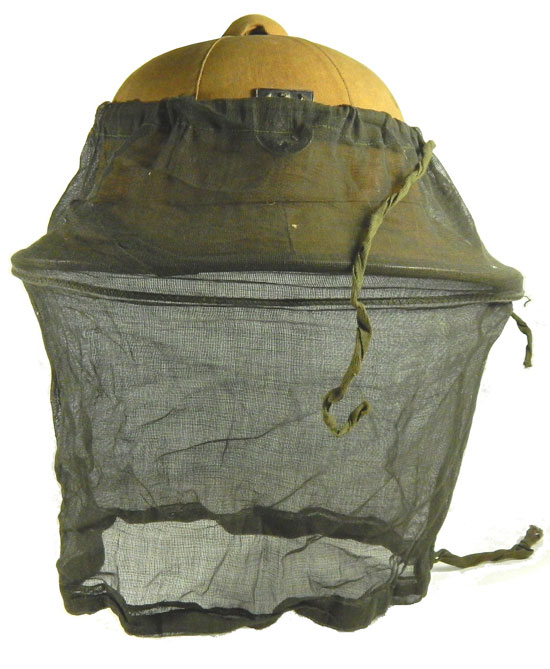
An American Army tropical “Pressed Fiber” helmet and mosquito net from the Vietnam War era of the late 1960s (Author’s Collection)
The military sun helmet was introduced to save lives, not from bullets or even spears but from quite literally from the sun. The European soldiers – first the British but later the French, Belgian, Spanish, Portuguese and Germans – fell victim to sun stroke and heat stroke in their respective newly obtained colonies. The sun helmet offered protection from the sun and along with better tropical clothing likely helped save countless lives beginning in the second half of the 19th century.
The other problem facing soldiers as well as diplomats, colonists and workers was tropical disease. Among the most deadly was yellow fever. Even today in many tropical regions – especially Africa and South America – yellow fever continues to be a major problem. Today nearly a billion people live in an area of the world where the disease is common. Yellow fever originated in Africa but spread to South America through the slave trade in the 17th century, and since that time there have been major outbreaks in the Americas, Africa and even Europe.
The disease is caused by the yellow fever virus and is spread by the bite of female mosquitoes. At the turn of the last century the mortality rate was known to reach 85 percent. This is notable in the conflicts of the era that occurred in tropical regions.
During the Spanish-American War of 1898, which was fought in part in Cuba where yellow fever was a problem, relatively few men were killed in action. In fact only 968 American soldiers lost their lives in actual combat, but the total wartime deaths were in excess of 5,000 as yellow fever swept through the American camps. One notable factor is that the War Department planned the Santiago campaign for July and August, a time when the disease was most likely to strike.
The war against Spain was a quick one for the Americans, but the war against the mosquitoes was to continue. It wasn’t until 1881 that it was understood how yellow fever was transmitted. Dr. Carlos Finlay was among the first to determine that the insects were spreading the disease, and later Dr. William Gorgas applied these insights to help eradicate yellow fever from Havana by essentially eradicating the mosquito. Dr. Walter Reed utilized similar tactics during the construction of the Panama Canal. This included draining of ponds and swamps, fumigation and installation of public water systems.
One other facet utilized was mosquito netting! Today it is something that is taken for granted, but it can help reduce the spread of yellow fever as well as malaria, dengue fever and other forms of encephalitis including the West Nile virus.
Malaria has been as much of a problem for armies as yellow fever, and the first recorded cases date back to 2700 BCE in China, but as with yellow fever the vector for the disease wasn’t identified until much later. It was only in 1880 that Charles Louis Alphonse Laveran identified mosquitoes as being the vector – and thus responsible for the spread – of malaria.
Mosquito netting is common today, but forms of it were used for centuries.
It was only in the 20th century however that it became part of the military kit and could be worn with a helmet or other military headdress. It isn’t clear which nation was first to utilize the thin netting for use over the head and face, but it appears that the Germans, French and Americans introduced various patterns.
The Germans used mosquito netting in World War II in North Africa, the Balkans and even southern Russia, not only to stop actual mosquitoes from lunching on its soldiers but from the black flies and other insects that were attracted to humans. In addition to helmet nets that were designed to fit over the tropical helmet, it appears that other netting was utilized over the steel helmets – likely in Russia and Italy, where flies can be also be a problem.

A German tropical helmet with netting, which tied around the helmet over the brim (Private Collection)

A German soldier in Russia in 1943 with a net over his steel helmet – note this is a different type of netting than the one used with the tropical helmet
The French developed mosquito nets that could be worn over the American style M1 steel helmet or tropical helmets likely for use in the campaigns in Southeast Asia following World War II, and these nets may have also been used in the Algerian campaign. It isn’t clear how widely these were introduced to the soldiers, but examples seem to date from the 1950s – so perhaps these were produced but not issued in time for the French debacles in Asia and Africa.

A French tropical mosquito net from the 1950s. This was designed to be over over a cap or steel helmet, but does fit over the Model 1931 sun helmet as well (Author’s Collection)
The American soldiers in Vietnam were widely issued with mosquito nets, but insect repellent was developed by that time, which made wearing the large and ungainly netting less desirable. What is unique about the American netting is that a number of patterns were developed including one that fits over the tropical pressed fiber helmet, while others would be worn as a self-contained hat.

The top view of the American helmet net shows that its design differs little from the German pattern (Author’s Collection)
Today this form of netting is more popular with hunters and fishermen than soldiers – again likely because of better efforts at developing insect repellents for soldiers. However, it is likely that many a European soldier heading to Africa 150 years ago would have been delighted to have the netting – if only he knew it might have saved his life.







Hi!
Your collection is amazing!
I have one of those French, mid-century net hats with the arsenal acceptance stamp, exactly like the one shown.
I’m interested in selling it, but have no idea of its worth.
Would you be so kind as to let me know what you think?
Many thanks,
Cat